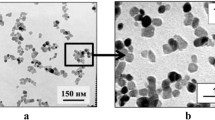Abstract
Pellicular γ-zirconium phosphate (γ-ZP(p)), i.e. sheets made up entirely of oriented lamellae of Zr(PO4)(H2PO4)·2H2O (γ-ZP), have been obtained by filtering colloidal dispersions of exfoliated γ-ZP in water/acetone. The ac-conductivity of γ-ZP(p) and γ-ZP was measured in the temperature range 20/–20°C on samples previously conditioned at relative humidities between 90 and 5%. In both cases, the conductivity dependence on material hydration indicates the presence of a non-negligible bulk transport at low relative humidities. For each relative humidity the conductivity data have been parameterised on the basis of the Arrhenius equation. Activation energy and pre-exponential factor values suggest the presence of the same conduction mechanism in both materials. The conductivity of γ-ZP(p) measured by applying the electric field parallel to the sheets ranges from 3·10−4 to 1·10−5 S cm−1 for relative humidity decreasing from 90 to 11%, being an order of magnitude higher than that of γ-ZP. Since the pellicular and microcrystalline material have very similar surface areas (11–12 m2/g), the higher conductivity of γ-ZP(p) is mainly due to the preferred particle orientation parallel to the electric field.
Similar content being viewed by others
6. References
A. Clearfield and G.D. Smith, Inorg. Chem.8, 431 (1969).
A. Christensen, E. Krogh Andersen, I.G. Krogh Andersen, G. Alberti, N. Nielsen, M. Lehmann, Acta Chem. Scan.44, 865 (1990).
D.M. Poojary, B. Spheizer and A. Clearfield, J. Chem. Soc. Dalton Trans. 1995, 111.
G. Alberti, M. Casciola, U. Costantino and R. Vivani, Adv. Mater.8, 291 (1996).
G. Alberti, M. Casciola, U. Costantino, A. Peraio and E. Montoneri, Solid State Ionics50, 315 (1992).
G. Alberti, M. Casciola, R. Palombari and A. Peraio, Solid State Ionics58, 339 (1992).
A. Clearfield, R.H. Blessing and J.A. Stynes, J. Inorg. Nucl. Chem.30, 2249 (1968).
G. Alberti, U. Costantino, C. Dionigi, S. Murcia Mascaròs and R. Vivani, Supramolecular Chem.6, 29 (1995).
G. Alberti, L. Boccali, M. Casciola, L. Massinelli and E. Montoneri, Solid State Ionics84, 97 (1996).
G. Alberti, C. Dionigi, E. Giontella, S. Murcia Mascaros and R. Vivani, submitted to J. Colloid and Interface Science.
G. Alberti, F. Cherubini and R. Palombari, Sensors and Actuators,B24–25, 270 (1995).
G. Alberti, M. Bracardi and M. Casciola, Solid State Ionics7, 243 (1982).
G. Alberti, M.G. Bernasconi and M. Casciola, Reactive Polymers11, 245 (1989).
M. Casciola and D. Bianchi, Solid State Ionics17, 287 (1985).
M. Casciola and U. Costantino,Solid State Ionics 20, 69 (1986).
Author information
Authors and Affiliations
Rights and permissions
About this article
Cite this article
Alberti, G., Casciola, M., Massinelli, L. et al. Preparation, proton transport properties and use in gas sensors of thin films of zirconium phosphate with γ-layered structure. Ionics 2, 179–183 (1996). https://doi.org/10.1007/BF02376018
Received:
Issue Date:
DOI: https://doi.org/10.1007/BF02376018




